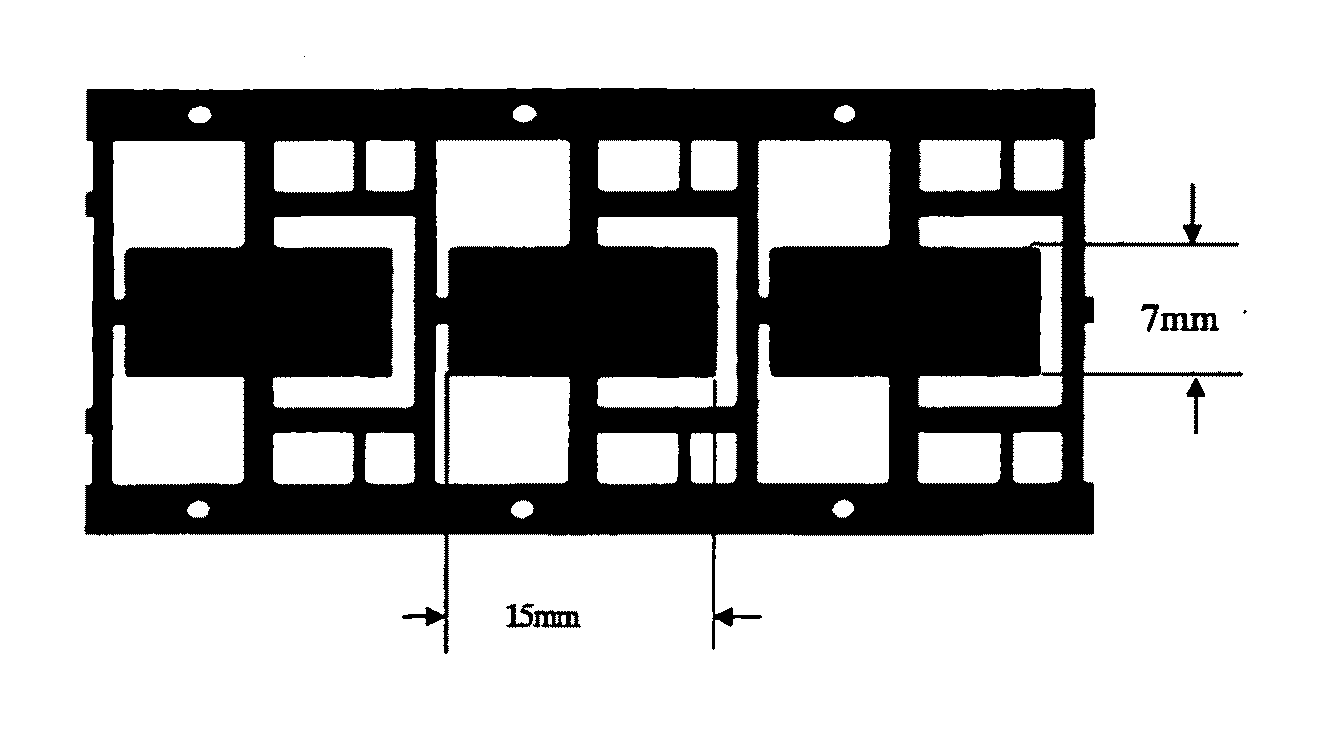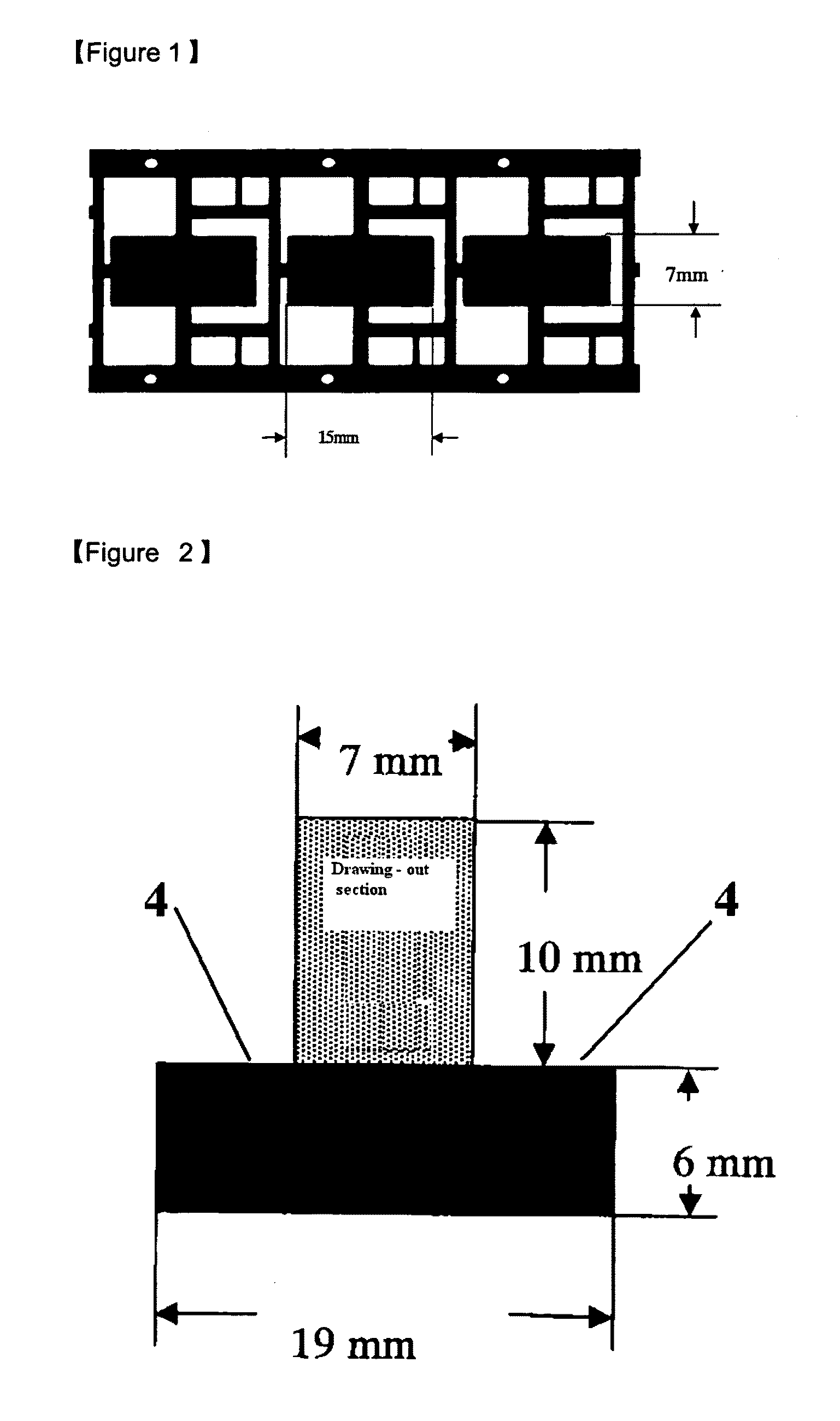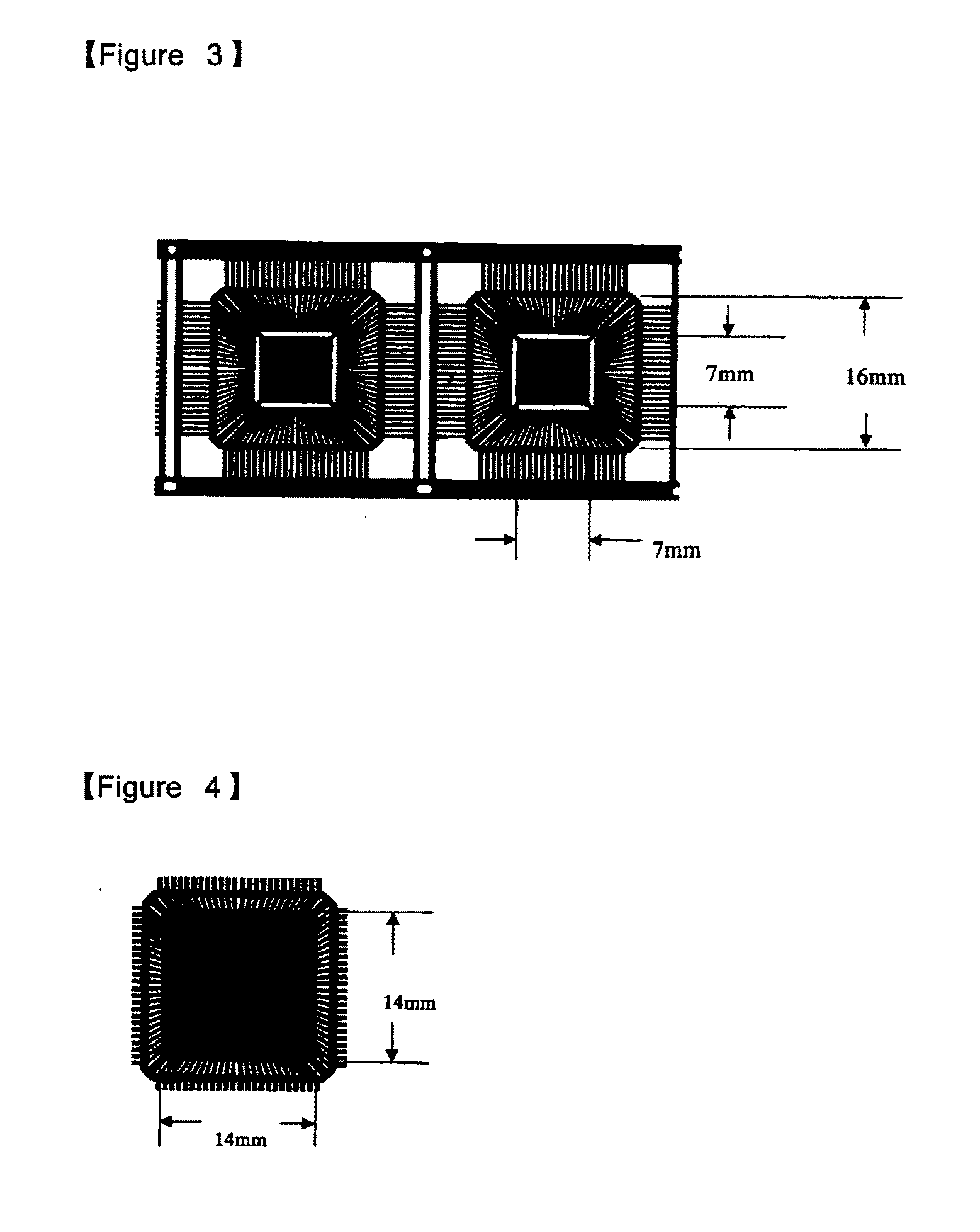Primer resin for semiconductor device and semiconductor device
a technology of primer resin and semiconductor elements, which is applied in the direction of adhesive types, adhesive processes with surface pretreatment, basic electric elements, etc., can solve the problems of cracking in the semiconductor element itself, deterioration of the adhesion properties of the interface between the cured product and the semiconductor element, and generation of stress, so as to achieve excellent heat resistance, less shrinkage stress, and no curing shrinkage
- Summary
- Abstract
- Description
- Claims
- Application Information
AI Technical Summary
Benefits of technology
Problems solved by technology
Method used
Image
Examples
synthesis example 1
[0057]Into a 300 ml reactor equipped with a thermometer, a reflux cooler, a Dean-Stark trap, a powder inlet, a nitrogen inlet device and a stirring device, 24.84 g (0.085 mol) of APB-N (1,3-bis-(3-aminophenoxy)benzene manufactured by Mitsui Chemical, Inc., molecular weight: 292.34) as a diamine component was put, and 38.42 g of methylbenzoate as a solvent was added thereto while flowing dry nitrogen, followed by stirring at 60° C. for 30 minutes. After that, 26.88 g (0.087 mol) of ODPA (3,3′-oxydiphthalic acid anhydride: manufactured by MANAC Incorporated, molecular weight: 310.22) as tetracarboxylic acid dianhydride component, 57.63 g of gamma-butyrolactone and 0.868 of gamma-valerolactone as solvents, 1.371 g of pyridine as a catalyst and 22.2 g of toluene as a dehydrating agent were further added thereto. The inside of the reactor was heated to 180° C. and the temperature was maintained for 6 hours while distilling off generated water through the Dean-Stark trap to carry out synt...
synthesis example 2
[0058]Into a 500 ml reactor equipped with a thermometer, a reflux cooler, a Dean-Stark trap, a powder inlet, a nitrogen inlet device, a stirring device, 14.67 g (0.050 mol) of APB-N (1,3-bis-(3-aminophenoxy)benzene manufactured by Mitsui Chemical, Inc., molecular weight: 292.34) and 26.13 g (0.093 mol) of ABPS (3,3′-diamino-4,4′-dihydroxydiphenylsulfone manufactured by Nippon Kayaku Co., Ltd., molecular weight: 280.3) as diamine components were put, and 64.02 g of methylbenzoate as a solvent was added thereto while flowing dry nitrogen, followed by stirring at 60° C. for 30 minutes. After that, 45.38 g (0.146 mol) of ODPA (4,4′-oxydiphthalic acid anhydride manufactured by MANAC Incorporated, molecular weight: 310.22) as tetracarboxylic acid dianhydride component, 96.03 g of gamma-butyrolactone as a solvent, 1.465 g of gamma-valerolactone and 2.314 g of pyridine as catalysts, and 32.5 g of toluene as a dehydrating agent were further added thereto. The inside of the reactor was heated...
synthesis example 3
[0059]In a 500 ml reactor equipped with a thermometer, a reflux cooler, a Dean-Stark trap, a powder inlet, a nitrogen inlet device and a stirring device, 49.072 g (0.158 mol) of Kayabond C-300S (4,4′-diamino-3,3′,5,5′-tetraethyldiphenylmethane manufactured by Nippon Kayaku Co., Ltd., molecular weight: 310.48) as diamine component was put, and 390.0 g of N-methyl-2-pyrrolidone as a solvent was added while flowing dry nitrogen, followed by stirring at 60° C. for 30 minutes. After that, 50.928 g (0.158 mol) of BTDA (3,4,3′,4′-benzophenontetracarboxylic acid dianhydride manufactured by Degussa, molecular weight: 322.23) as tetracarboxylic acid dianhydride component and 30.0 g of toluene as a dehydrating agent were further added thereto, the inside of the reactor was heated to 180° C., and the same temperature was maintained for 6 hours while distilling off generated water through a Dean-Stark trap to carry out synthesis of polyamic acid and ring closure reaction (imide reaction). After ...
PUM
| Property | Measurement | Unit |
|---|---|---|
| temperature | aaaaa | aaaaa |
| boiling point | aaaaa | aaaaa |
| temperature | aaaaa | aaaaa |
Abstract
Description
Claims
Application Information
 Login to View More
Login to View More - R&D
- Intellectual Property
- Life Sciences
- Materials
- Tech Scout
- Unparalleled Data Quality
- Higher Quality Content
- 60% Fewer Hallucinations
Browse by: Latest US Patents, China's latest patents, Technical Efficacy Thesaurus, Application Domain, Technology Topic, Popular Technical Reports.
© 2025 PatSnap. All rights reserved.Legal|Privacy policy|Modern Slavery Act Transparency Statement|Sitemap|About US| Contact US: help@patsnap.com



